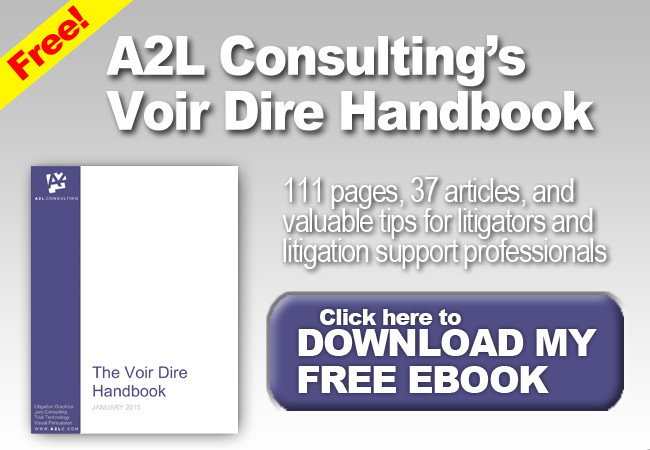by Ken Lopez
Founder/CEO
A2L Consulting
As I discussed in Part 1 of this series, the “reptile” trial strategy is quickly spreading among plaintiffs counsel. Some plaintiffs counsel have, in fact, claimed that the strategy has resulted in verdicts totaling more than $6 billion in the past few years.
In a large room of defense attorneys to whom I made a presentation last week, more than half reported having seen the strategy used in one of their cases. I think that may just be the tip of the iceberg. It appears that many defense counsel are being subjected to the strategy and don't know it is happening to them until it is too late.
In light of this fact, below are 10 ways to spot the strategy. In subsequent articles, we will discuss what to do to counter it. From the very start of your case, look for any of the following 10 phenomena:
- You encounter themes suggesting that the community needs to be protected from the defendant; e.g. “Walking past stores on Main Street is part of what it means to be American.”
- The behavior of the plaintiff or other contributing or mitigating traits of the plaintiff are ignored, and instead the plaintiff works hard to keep the focus on the defendant or even an idealized defendant.
- Plaintiffs introduce a discussion of “safety rules” throughout all pre-trial phases of the case; e.g. “Do you agree that keeping the public safe is a key role of your train operators?”
- Plaintiffs use phrases during discovery like “No person has a right to needlessly endanger another person.”
- Plaintiffs make an effort to imagine what the defendants’ conduct could have been in a worst-case scenario. e.g. “What if your plane hit a school instead of a forest?”
- There is an almost bizarre avoidance of discussing the standard of liability.
- Plaintiffs emphasize the word “must” during depositions like, “You would agree that management must remove needless workplace dangers?”
- There is considerable emphasis on "responsibilities" and little emphasis on the actual standard of liability.
- Plaintiffs counsel try to ask your client to articulate worst case scenarios if safety rules are violated, as in, “How much harm could a chemical spill from your plant cause?”
- Plaintiffs try to substitute job duties for a standard of liability. e.g. “A pilot's job is to make sure the plane is flightworthy, right?”
Spotting any one of these indicators means there is a good chance that the reptile trial strategy is in play. Failing to pay close attention to the use of the strategy may very well create a strong advantage for the plaintiff at trial. It is now critical that every defense attorney know how to respond to this strategy. We will cover this and other topics in subsequent posts (click here to be notified of subsequent posts) in this Reptile trial strategy series.
Have you seen these tactics in your cases? I'm particularly interested in non-tort case examples. Please tell me, either publicly or by private email, what you have seen.
Other articles and resources related to trial strategy, jury persuasion and jury consulting from A2L Consulting:
- Repelling the Reptile Trial Strategy as Defense Counsel - Part 1
- Download the Junk Science e-book jointly published by A2L & ISS
- How to Handle a Boring Case
- The Voir Dire Handbook — Complimentary Download
- 9 Things In-House Counsel Say About Outside Litigation Counsel
- 25 Things In-House Counsel Should Insist Outside Litigation Counsel Do
- 7 Reasons In-House Counsel Should Want a Mock Trial
- 14 Differences Between a Theme and a Story in Litigation
- Planning For Courtroom Persuasion? Use a Two-Track Trial Strategy
- Accepting Litigation Consulting is the New Hurdle for Litigators
- 5 Ways to Maximize Persuasion During Opening Statements - Part 1
- 5 Ways to Maximize Persuasion During Opening Statements - Part 2






Leave a Comment